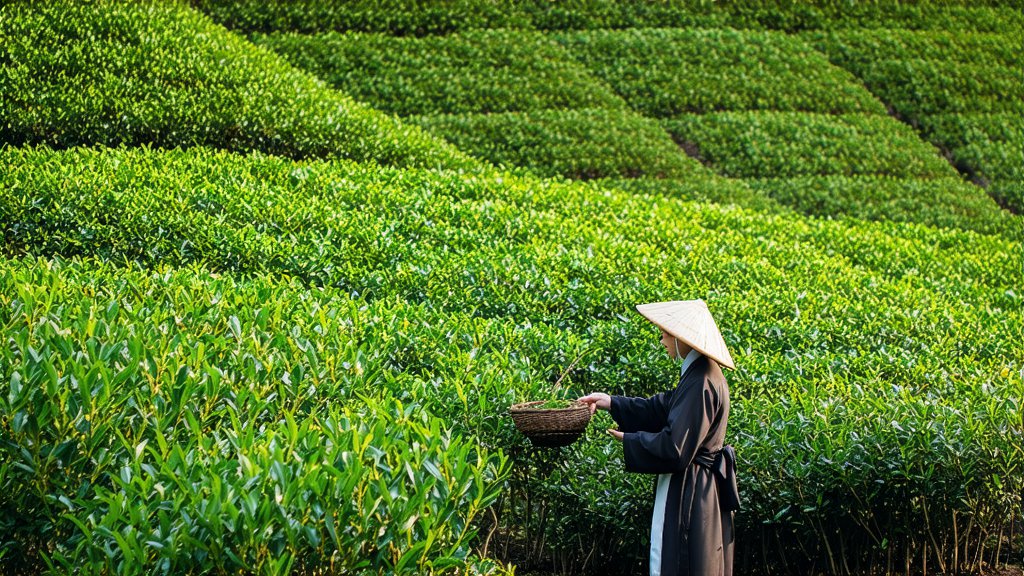
In the vast landscape of Chinese tea culture, Tieguanyin Oolong stands as a testament to the artistry and precision that goes into creating one of the most revered teas in the world. Originating from the mist-shrouded mountains of Anxi County in Fujian Province, this tea has captivated tea enthusiasts for centuries with its unique flavor profile, aromatic complexity, and the meticulous craftsmanship involved in its production. As we embark on a journey through the history, varieties, manufacturing process, and tasting rituals of Tieguanyin, prepare to be transported into a world where every sip tells a story.
Historical Roots and Evolution
Tieguanyin, often referred to as the "Iron Goddess of Mercy," traces its origins back to the early Qing Dynasty, around the mid-18th century. Legend has it that the tea was discovered by a poor scholar named Wei Yin who found an ancient camellia bush while he was studying for the imperial examinations. The tea's exceptional quality led to its rapid rise in popularity, eventually earning it the prestigious title of "Best Tea in the Empire" by Emperor Qianlong during a visit to Anxi. This royal endorsement cemented Tieguanyin's status as a symbol of excellence within the Chinese tea hierarchy.
Over time, Tieguanyin evolved, adapting to changing tastes and preferences while maintaining its core characteristics. Today, it represents not just a tea but a cultural heritage deeply intertwined with the history and identity of Anxi County and beyond.
Varieties and Flavor Profiles
Tieguanyin is renowned for its diverse range of flavors, which can vary significantly based on factors such as altitude, soil composition, and weather conditions during growth. The two primary categories are Xiang (fragrant) and Yan (rock). Xiang Tieguanyin emphasizes floral and fruity notes, often reminiscent of orchids or honeysuckle, while Yan Tieguanyin boasts a more mineral-rich taste with hints of stone fruit and a distinctive rocky texture.
Within these broad categories, there are further subdivisions like Qing Xiang (Green Fragrance), Huang Xiang (Yellow Fragrance), and Rou Yan (Soft Rock), each offering a unique sensory experience. These variations make Tieguanyin a fascinating subject for exploration, inviting drinkers to embark on a personal quest to find their preferred expression.
The Art of Crafting Tieguanyin
The creation of Tieguanyin is a meticulous process that requires both skill and patience. It begins with the careful selection of tea leaves from specific cultivars grown in high-altitude regions known for their ideal growing conditions. The leaves undergo partial oxidation, a delicate balance between green and black tea processing, which contributes to its signature flavor and aroma.
After plucking, the leaves undergo several stages of withering under the sun or in shaded areas to reduce moisture content gradually. This step is crucial as it sets the stage for the subsequent rolling and oxidation processes. The leaves are then gently rolled to break down cell walls, allowing enzymes to interact with oxygen, initiating the oxidation process. This controlled oxidation is what gives Tieguanyin its characteristic color, aroma, and taste.
Following oxidation, the leaves are subjected to a series of baking sessions at varying temperatures to fix their flavors and remove any remaining moisture. This step also imparts a subtle toastiness to the tea, enhancing its complexity. Finally, the dried leaves are sorted and graded based on size and quality before being packaged for distribution.
Mastering the Gongfu Brewing Technique
To truly appreciate the depth and nuance of Tieguanyin, one must engage in the traditional Gongfu brewing method. This elaborate ritual involves using a small Yixing clay teapot and precise temperature control to extract the fullest potential from each leaf. Begin by warming the teapot and cups with hot water to ensure they are at an optimal serving temperature. Then, place approximately 5 grams of loose leaf tea into the pot, followed by freshly boiled water cooled to around 90°C (194°F).
Allow the tea to steep for about 30 seconds for the first infusion, gradually increasing the steeping time for subsequent infusions. Each brewing cycle reveals different layers of flavor and aroma, showcasing the tea's versatility and longevity. Pay close attention to the liquor's color, clarity, and mouthfeel, as well as the evolving scents released with each pour.
Tasting Notes and Sensory Experience
When savoring Tieguanyin, focus on identifying the primary aromas—floral, fruity, or mineral—followed by secondary notes such as roasted nuts, caramel, or even hints of spice. Take note of the tea's body, whether it feels light and silky or full-bodied with a lingering finish. The aftertaste should be clean, with a pleasant sweetness that invites another sip.
Tieguanyin's ability to evolve over multiple infusions is a hallmark of its quality. With each brew, new dimensions emerge, making it a tea that rewards patience and mindfulness. As you delve deeper into the world of Tieguanyin, remember that each cup is not just a beverage but a reflection of centuries-old traditions and the dedication of countless tea artisans who have perfected this art form.
In conclusion, Tieguanyin Oolong is more than just a tea; it is a living tradition that embodies the essence of Chinese tea culture. From its storied past to its intricate production methods and the meditative practice of Gongfu brewing, every aspect of Tieguanyin invites us to slow down, appreciate the present moment, and connect with nature's bounty. Whether you are a seasoned tea connoisseur or a curious beginner, exploring Tieguanyin promises a journey filled with discovery, delight, and profound appreciation for one of the world's greatest teas.